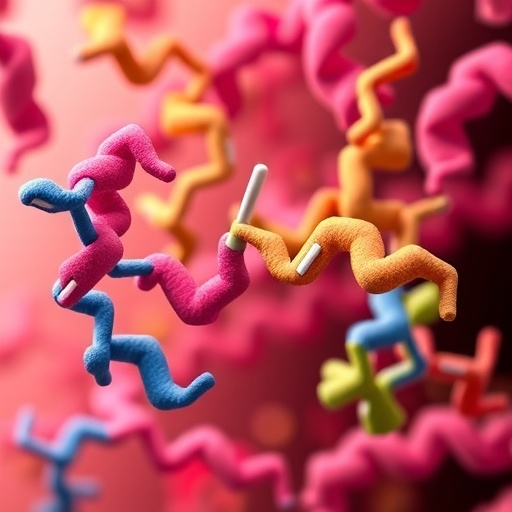In a groundbreaking advancement at the intersection of artificial intelligence and biomechanics, researchers at the University of California San Diego have unveiled an innovative generative AI model designed to revolutionize athletic training and rehabilitation. Named BIGE—Biomechanics-informed GenAI for Exercise Science—this model harnesses the power of generative AI while rigorously incorporating biomechanical principles to generate highly realistic human motion simulations. These simulations could ultimately aid athletes in avoiding injury, optimizing performance, and recovering efficiently after trauma, marking a significant stride forward in sports science and bioengineering.
Traditionally, computational models striving to simulate human movement, particularly complex and physically demanding exercise routines like squats, have often faltered either by producing biomechanically implausible motions or by demanding prohibitive computational resources to ensure physical fidelity. BIGE uniquely addresses these challenges by integrating anatomical constraints and muscle force limitations into the generative AI workflow, generating motion sequences that adhere to the natural mechanics and forces at play in the human body. This synthesis is poised to transform how movement analysis and exercise prescriptions are conducted in both healthy and rehabilitative contexts.
The researchers trained BIGE using detailed motion-capture datasets of individuals performing squats, a fundamental yet biomechanically intricate exercise involving multiple joints and muscle groups. These videos were meticulously converted into 3D skeletal models that serve as the digital avatars through which the AI learned dynamic motion patterns. By incorporating computed biomechanical forces into the generative process, the model ensures that generated motions are not only visually realistic but also physically plausible. This contrasts sharply with many traditional generative models, which might prioritize visual accuracy alone without regard to the underlying mechanical feasibility.
Beyond generating visually plausible motion, BIGE’s ability to predict and generate biomechanically sound movements opens the door to prescriptive analytics in exercise science. It can provide customized recommendations to athletes to perform exercises in ways that minimize injury risks without compromising performance efficacy. The generated motion patterns can also be tailored for individuals recovering from injuries, enabling them to maintain fitness safely as they rehabilitate. By simulating optimal movement patterns under various biomechanical constraints, BIGE effectively bridges the gap between theoretical biomechanics and practical exercise routines.
A particularly noteworthy feature of BIGE is its computational efficiency. While previous physics-based simulations have achieved biomechanical realism, they tend to require extensive computational time and resources, making real-time feedback or personalized recommendations challenging. BIGE’s generative AI framework circumvents this bottleneck by learning motion dynamics implicitly, producing rapid and realistic motion sequences without the heavy computational overhead usually associated with physics-based modeling.
Anticipated to be a transformative tool beyond the domain of squats, the research team plans to extend BIGE to encompass a broader array of human movements. This expansion could include more complex sports activities or daily movements relevant to fall prevention and mobility maintenance, especially for vulnerable populations like the elderly. The ability to personalize BIGE’s generative models for specific individuals by integrating personalized anatomical and motion data is expected to push personalized medicine and training protocols into new frontiers.
Experts like Andrew McCulloch, a distinguished bioengineering professor at UC San Diego, emphasize that integrating generative AI with rigorous biomechanical models represents the future paradigm of exercise science research and application. This methodology not only promises enhanced outcomes in athletic training but also in medical rehabilitation and preventive healthcare. As predicted, the confluence of computational science and biomechanics embodied by BIGE could redefine human movement research.
The development of BIGE involved a multidisciplinary team combining expertise in computer science, engineering, biomechanics, and bioengineering. Rose Yu, a leading professor in computer science and engineering at UC San Diego, highlights that the accessibility of this methodology enables wide adoption across fields, from sports science to clinical environments. The model’s open architecture encourages further research and commercialization opportunities aimed at improving human health through technology.
The capacity of BIGE to simulate sophisticated squat motions more realistically than existing models—in which the hip joint movement is carefully tracked over the squat cycle—was highlighted in a video demonstration comparing output from baseline models and BIGE. The model impressively captures the nuances of joint trajectories and force patterns, enhancing its utility in practical, real-world scenarios where precise motion control is crucial.
Future applications of BIGE may not be confined to athletes alone. Its potential use cases include fall risk assessment in geriatric populations, where understanding and predicting safe movements can prevent debilitating injuries. Furthermore, integration with wearable sensors and real-time feedback devices could enable dynamic, AI-powered coaching and rehabilitation protocols tailored to an individual’s biomechanics and recovery state.
The research team recently showcased BIGE at the prestigious Learning for Dynamics & Control Conference at the University of Michigan, underlining the academic and practical significance of their work. The confluence of AI-driven generative modeling and biomechanics promises exciting advancements in both scientific understanding and applied health sciences, heralding a new era of data-driven human motion analysis and intervention.
As BIGE evolves and garners wider adoption, it embodies the promising fusion of artificial intelligence and biomechanical science. It offers new horizons not only for athletes eager to optimize their performance and avoid injury but also for clinicians, trainers, and researchers striving to enhance the quality of human movement and rehabilitation outcomes globally.
Subject of Research: People
Article Title: BIGE : Biomechanics-informed GenAI for Exercise Science
Web References:
https://rose-stl-lab.github.io/UCSD-OpenCap-Fitness-Dataset/
Image Credits: University of California San Diego
Keywords:
Generative AI, Bioengineering, Biomedical Engineering, Computer Science, Artificial Intelligence, Sports, Sports Medicine
Tags: athletic training innovationsBioengineering in injury preventionBiomechanics-informed AI modelsComputational models in biomechanicsExercise science breakthroughsGenerative AI in sports scienceHuman motion analysis techniquesInjury prevention for athletesMotion simulation technologyOptimizing athletic performanceRehabilitation advancements in sportsTraining athletes with AI technology




